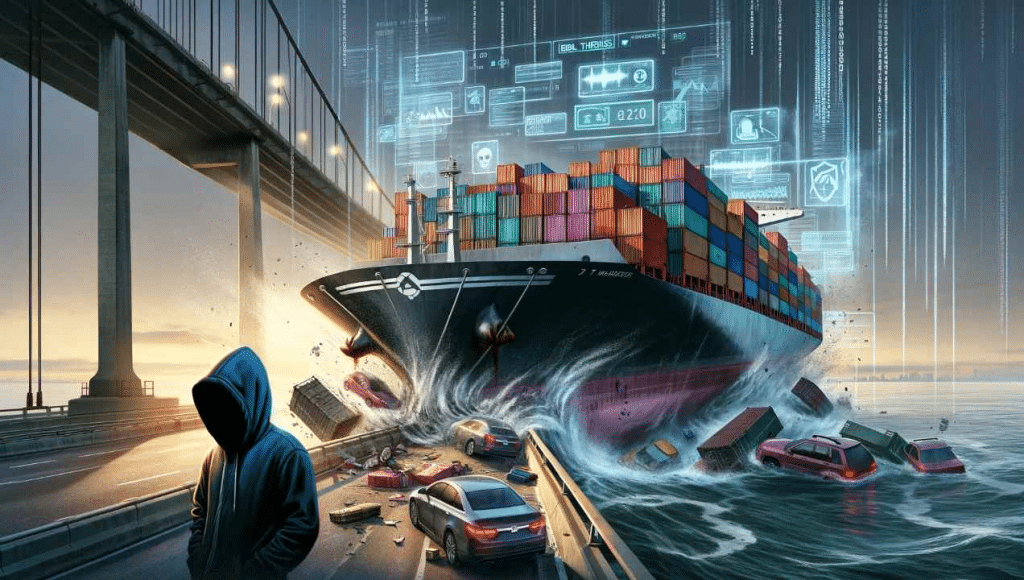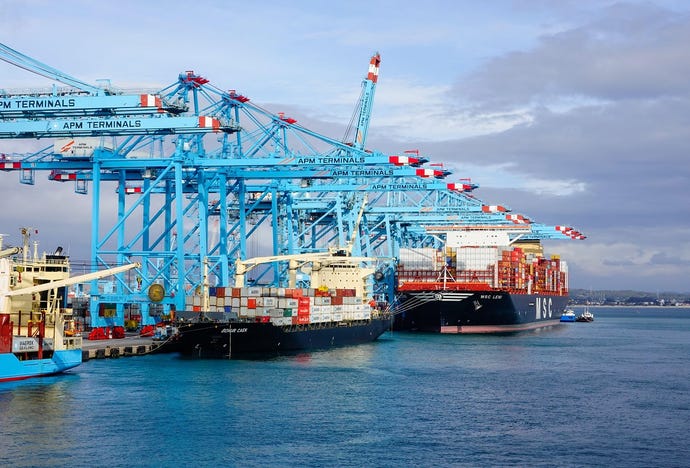On an unexpected Tuesday, the collision of a container ship with the Francis Scott Key Bridge in Baltimore not only disrupted the normal flow of traffic and commerce but also sparked a vigorous debate on the potential causes of this incident. Among the various theories proposed, the role of cybersecurity—or the lack thereof—has emerged as a focal point of discussion. This event has served as a catalyst for a broader examination of cybersecurity practices within the maritime industry, revealing both vulnerabilities and the sometimes-overlooked factors that suggest other causes for such incidents. In the digital age, the maritime industry’s reliance on technology for navigation, communication, and operational functions has grown exponentially. This shift towards digitalization, while beneficial in terms of efficiency and connectivity, has also increased the sector’s exposure to cyber threats. Systems that control navigation, cargo handling, and engine operations are all potential targets for cyberattacks, which can lead to severe safety and financial risks.

EVALUATING THE POTENTIAL FOR A CYBERSECURITY BREACH
In recent years, the maritime industry has increasingly embraced technology, relying on digital systems for navigation, communication, and operational functions. This digital transformation has enhanced efficiency and connectivity but has also exposed the sector to cyber threats. Cyberattacks can target systems controlling navigation, cargo handling, and even the engines of these colossal vessels, posing a significant risk to safety and commerce.
Could Cybersecurity Have Been a Factor in the Baltimore Incident?
To understand whether a cybersecurity breach could have led to the collision with the Francis Scott Key Bridge, it is essential to consider several factors:
- Navigation Systems Vulnerability: Modern ships use sophisticated navigation systems like the Automatic Identification System (AIS) and the Electronic Chart Display and Information System (ECDIS). If these systems were compromised, it could lead to inaccurate positioning information or erroneous navigational instructions.
- Operational Control Systems: Beyond navigation, ships rely on complex systems for operational control, including engine management and steering control. A cyberattack on these systems could impair a vessel’s ability to maneuver, potentially leading to accidents.
- Human Error vs. Cyber Intrusion: Distinguishing between human error and the consequences of a cyberattack can be challenging. Incidents might initially appear as operational or navigational errors but later investigations could uncover tampering with digital systems.
- Historical Precedents: The maritime industry has witnessed cyberattacks before, such as the 2017 cyberattack on the shipping giant Maersk, which led to significant operational disruptions. These precedents highlight the plausibility of cybersecurity breaches leading to physical incidents.
ARGUMENTS AGAINST CYBERSECURITY BEING A FACTOR
While the possibility of a cybersecurity breach cannot be dismissed outright, several arguments suggest that other factors could be more plausible:
Technical Safeguards and Redundancies
Maritime vessels are equipped with numerous technical safeguards and redundant systems designed to prevent total system failure in case of a cyber intrusion. These include manual overrides for navigation and control systems, allowing crew members to maintain control over the vessel even if digital systems are compromised. Such safeguards can mitigate the impact of a cyber attack on a ship’s operational capabilities.
Cybersecurity Protocols and Training
The maritime industry has been increasingly aware of the potential cyber threats and has implemented stringent cybersecurity protocols and training for crew members. These measures are aimed at preventing unauthorized access and ensuring the integrity of the ship’s systems. Crews are trained to recognize and respond to cybersecurity threats, reducing the likelihood of a successful cyber attack impacting vessel navigation or control systems.
Physical Factors and Human Error
Many maritime incidents are the result of physical factors or human error rather than cyber attacks. These can include adverse weather conditions, navigational errors, mechanical failures, and miscommunication among crew members. Such factors have historically been the most common causes of maritime accidents and cannot be overlooked in any thorough investigation.
Complexity of Executing a Targeted Cyber Attack
Executing a cyber attack that leads to a specific outcome, such as causing a ship to collide with a bridge, requires an intimate knowledge of the vessel’s systems, current position, and intended course. It also necessitates overcoming the vessel’s cybersecurity measures without detection. The complexity and specificity of such an attack make it a less likely cause of maritime incidents compared to more conventional explanations.
Lack of Evidence Indicating a Cyber Attack
In the absence of specific evidence pointing to a cyber intrusion, such as anomalies in the ship’s digital systems, unauthorized access logs, or the presence of malware, it is prudent to consider other more likely causes. Cybersecurity investigations involve detailed analysis of digital footprints and system logs, and without concrete evidence suggesting a cyber attack, attributing the incident to such a cause would be speculative.
THE PATH FORWARD: STRENGTHENING CYBERSECURITY WHILE ACKNOWLEDGING OTHER RISKS
Regardless of whether a cyberattack played a role in the Baltimore bridge incident, this event underscores the importance of robust cybersecurity practices in the maritime industry. Enhancing cyber defenses, conducting regular security assessments, and training personnel in cybersecurity awareness are crucial steps in safeguarding maritime operations.
However, it is equally important to recognize and mitigate the non-cyber risks that ships face. A comprehensive approach to safety and security, encompassing both cyber and traditional factors, is essential for protecting the maritime industry against a wide range of threats.
The collision of a container ship with the Francis Scott Key Bridge has highlighted the critical role of cybersecurity in modern maritime operations, while also reminding us of the myriad other factors that can lead to such incidents. As the investigation into this event continues, the maritime industry must take a holistic view of security, embracing both digital and physical measures to ensure the safety of its operations in an increasingly complex and interconnected world.
“Our thoughts and prayers are with the U.S. Coast Guard Sector NCR, multiple first responders, and all those affected by the tragic incident at the Francis Scott Key Bridge in Baltimore. According to reports, a 948-foot Singapore-flagged containership collided with the bridge causing it to collapse, with persons reported to be in the water.”
Next Level Cybersecurity: Detect the Signals, Stop the Hack
Maritime Cybersecurity: A Guide for Leaders and Managers
InfoSec services | InfoSec books | Follow our blog | DISC llc is listed on The vCISO Directory




